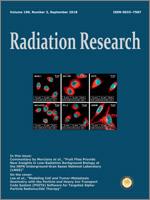In previous studies we determined a gene expression signature in baboons for predicting the severity of hematological acute radiation syndrome. We subsequently validated a set of eight of these genes in leukemia patients undergoing total-body irradiation. In the current study, we addressed the effect of intra-individual variability on the basal level of expression of those eight radiation-responsive genes identified previously, by examining baseline levels in 200 unexposed healthy human donors (122 males and 88 females with an average age of 46 years) using real-time PCR. In addition to the eight candidate genes (DAGLA, WNT3, CD177, PLA2G16, WLS, POU2AF1, STAT4 and PRF1), we examined two more genes (FDXR and DDB2) widely used in ex vivo whole blood experiments. Although significant sex- (seven genes) and age-dependent (two genes) differences in expression were found, the fold changes ranged only between 1.1–1.6. These were well within the twofold differences in gene expression generally considered to represent control values. Age and sex contributed less than 20–30% to the complete inter-individual variance, which is calculated as the fold change between the lowest (reference) and the highest Ct value minimum–maximum fold change (min–max FC). Min–max FCs ranging between 10–17 were observed for most genes; however, for three genes, min–max FCs of complete inter-individual variance were found to be 37.1 (WNT3), 51.4 (WLS) and 1,627.8 (CD177). In addition, to determine whether discrimination between healthy and diseased baboons might be altered by replacing the published gene expression data of the 18 healthy baboons with that of the 200 healthy humans, we employed logistic regression analysis and calculated the area under the receiver operating characteristic (ROC) curve. The additional inter-individual variance of the human data set had either no impact or marginal impact on the ROC area, since up to 32-fold change gene expression differences between healthy and diseased baboons were observed.
How to translate text using browser tools
20 June 2018
Impact of Inter-Individual Variance in the Expression of a Radiation-Responsive Gene Panel Used for Triage
S. Agbenyegah,
M. Abend,
M. J. Atkinson,
S. E. Combs,
K. R. Trott,
M. Port,
M Majewski
ACCESS THE FULL ARTICLE

Radiation Research
Vol. 190 • No. 3
September 2018
Vol. 190 • No. 3
September 2018




